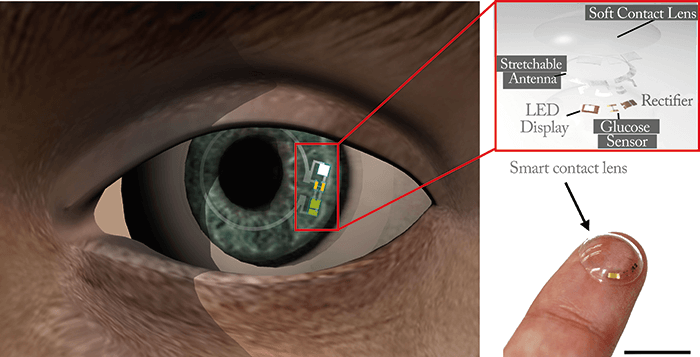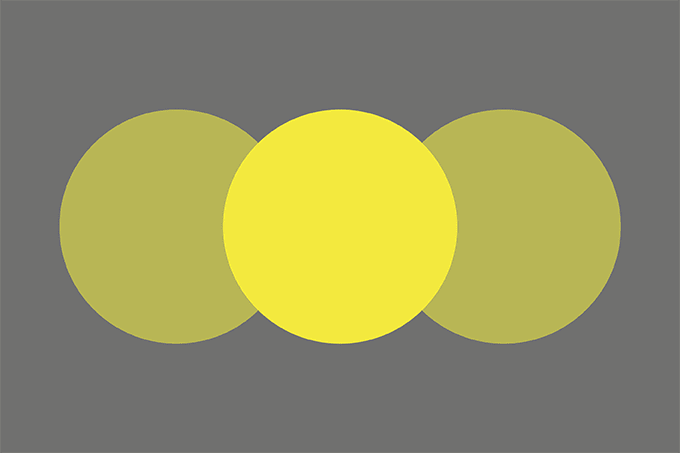Many patients with diabetes would be happy to see the back of their blood glucose monitor and the daily finger-prick tests. Enter: a team of scientists from the Ulsan National Institute of Science and Technology (UNIST), South Korea, who have created a means of wirelessly monitoring glucose levels with a soft contact lens.
“Embedded within our smart contact lens are electronic circuits, an antenna, a glucose sensor and LED pixels integrated as stretchable forms,” explains Jang-Ung Park (1). “This improves the comfort and wearing-time of the lens compared with previous smart lenses that were hard due to having brittle and more
rigid components.”
Their sensor comprises a graphene surface to which glucose oxidase (GOD) enzyme is immobilized. Tears (containing glucose) pass through the sensor channel; GOD oxidizes the glucose, which releases electrons in a concentration-dependent manner, which the sensor detects, enabling the glucose concentration to be determined (1). The sensor contains an LED that responds to the changes in resistance (which is coupled to tear glucose concentration). Below 0.9 mM, the LED emits light; above this, the LED pixel is turned off, providing a visible cue that the glucose threshold has been reached (Figure 1).

So far, the team has demonstrated that the device can respond to changing glucose concentrations in rabbit eyes, and they plan to move into clinical tests in humans. But what of its applications for ophthalmology? The team write that their novel system could “provide a platform for wireless, continuous, and noninvasive monitoring of physiological conditions, as well as the detection of biomarkers associated with ocular and other diseases,” and drug delivery isn’t out of the question.
References
- J Park et al., “Soft, smart contact lenses with integrations of wireless circuits, glucose sensors, and displays”, Science Advances, 4, eaap9841.



